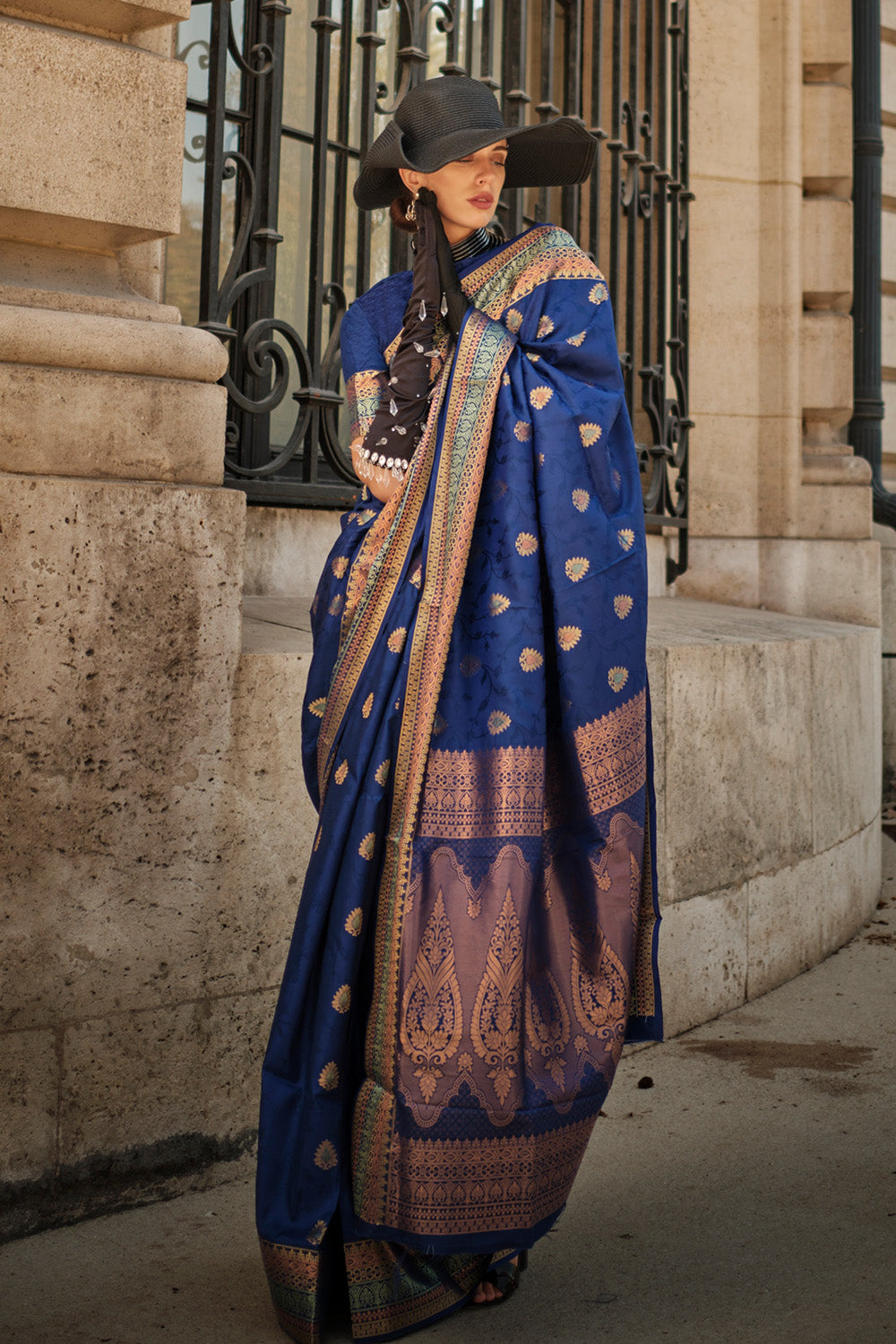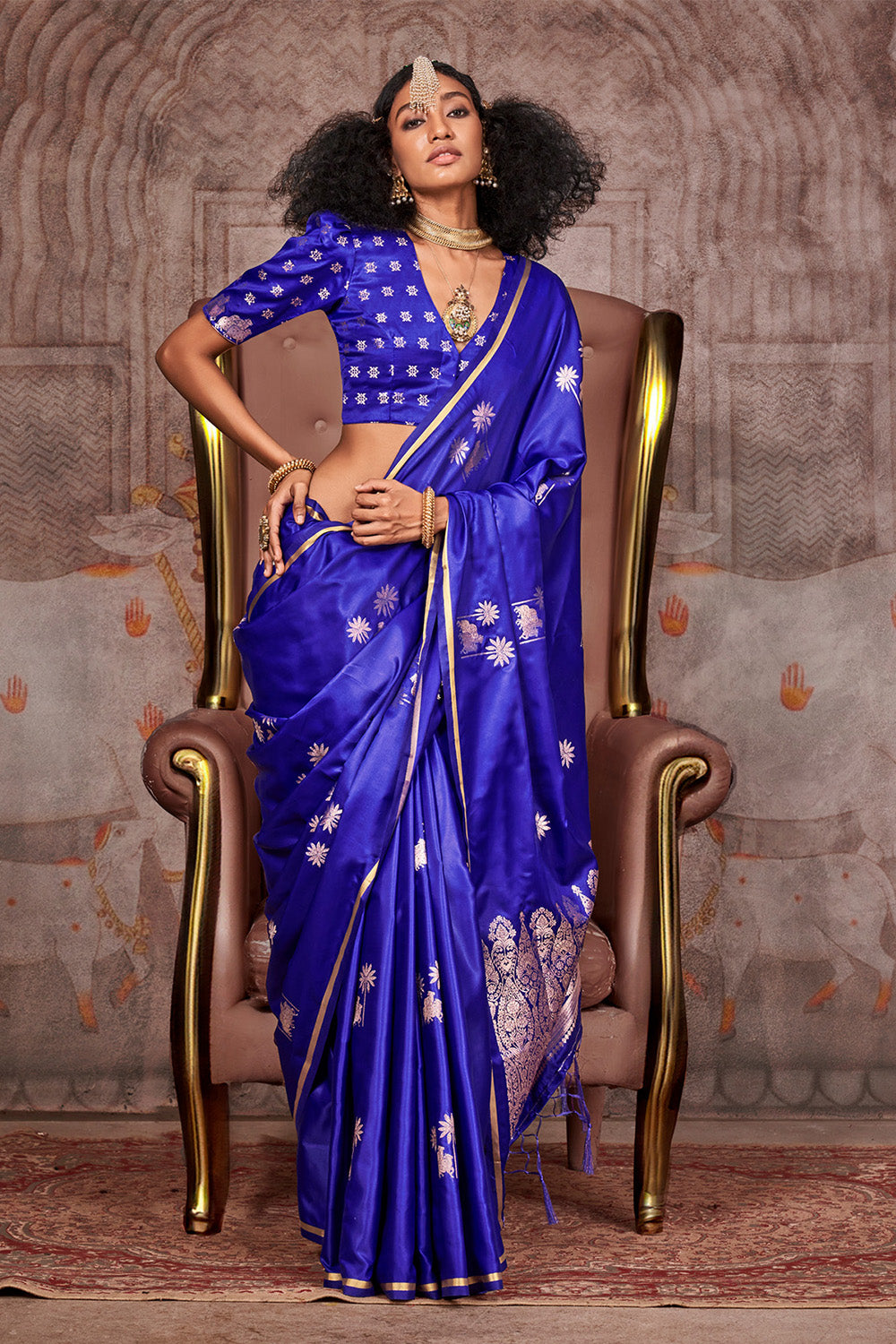
Draped in Heritage: The Banarasi Saree Saga
Share
The Banarasi saree is celebrated for its exquisite craftsmanship and luxurious appeal, embodying the rich heritage and artistry of India. Originating in the historic city of Varanasi, this iconic garment has transcended generations, enchanting women worldwide with its enduring allure.
Why Banarasi Sarees are Heritage Drapes:
Banarasi silk has its roots in the Mughal era when Varanasi was a bustling hub of trade and culture. It’s believed that Mughal Emperor Akbar played a key role in shaping this craft, as weaving flourished under his reign. The Mughals, known for their love of art, inspired new textile designs and techniques that still influence Banarasi sarees today.
The process of making Banarasi fabric is just as magical as the sarees themselves. It all starts with a jacquard loom—a special kind of loom with about 5,600 threads stretched across it, each about 45 inches wide. To create a pattern, the threads (called warp and weft) are woven together in a precise way, like a dance where every move matters.
Before weaving begins, an artist sketches the design on graph paper, carefully choosing colors and patterns. Then, punch cards are created to guide the loom in weaving the design. Hundreds of these cards are used to make just one beautiful piece of fabric. Every detail, from the way threads overlap to the final pattern, is carefully planned to create the stunning Banarasi silk we know and love.

Types of Design Patterns in Banarasi Sarees:
Among the many elements that make these sarees unique, the design patterns stand out for their creativity and cultural significance. From jungle-inspired motifs to Mughal floral patterns, Banarasi sarees offer a variety of styles that cater to every taste. Let’s explore some of the most iconic design patterns that make these sarees so special.
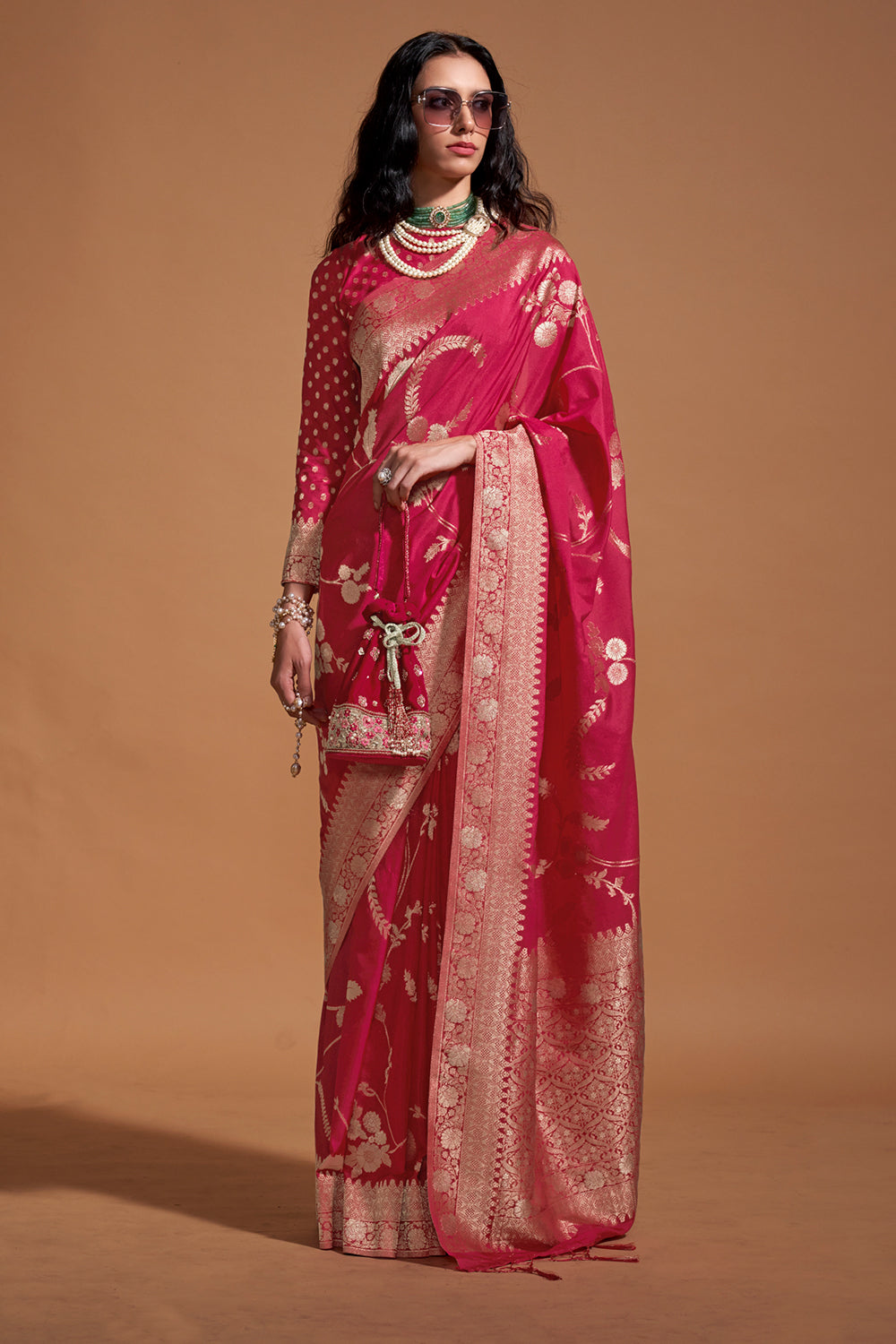
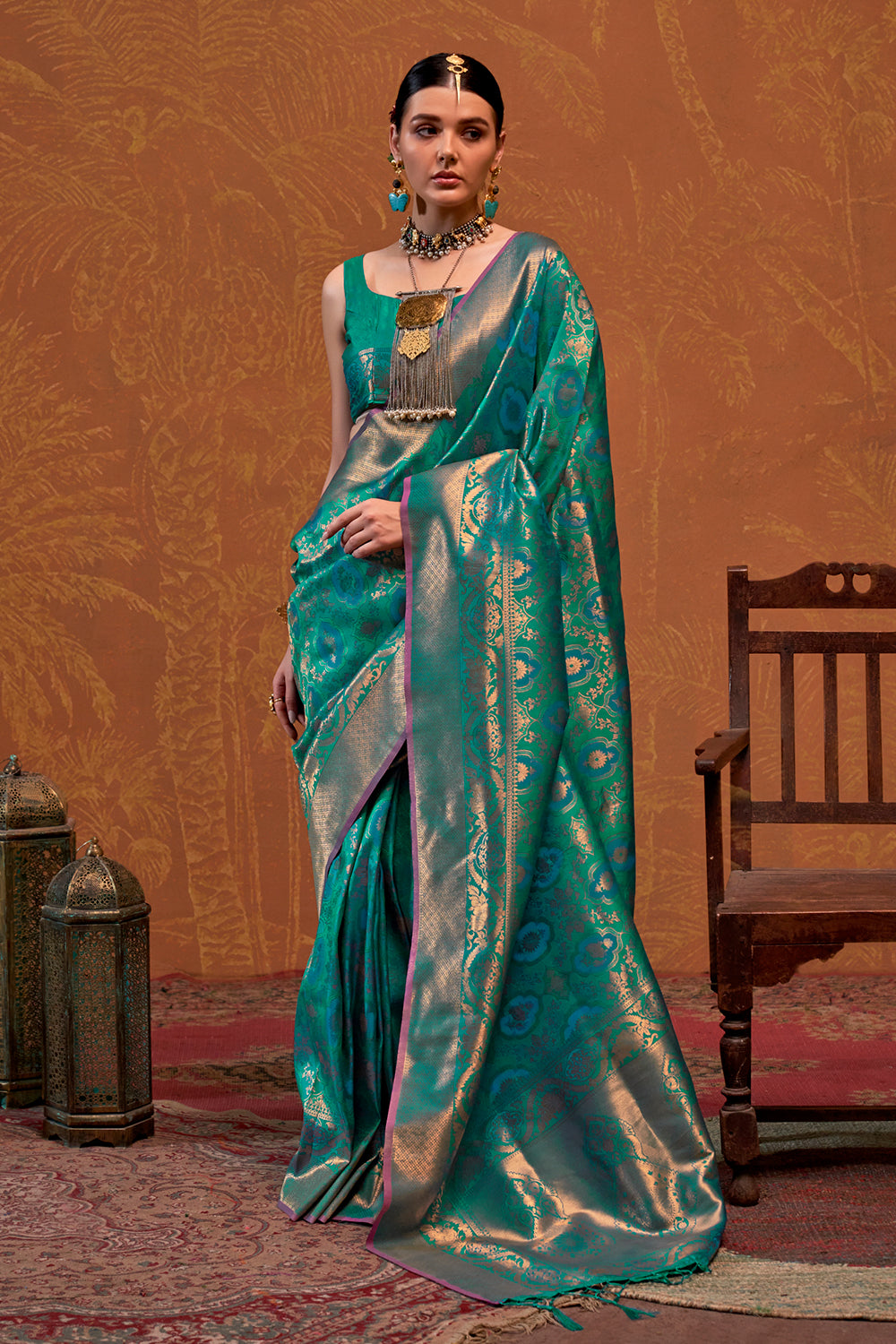
Butidar sarees have small floral patterns spread evenly across the fabric, giving them a simple yet elegant look. These designs are inspired by Mughal art and are perfect for festive occasions because of their timeless appeal.
Tanchoi: Tanchoi is more about the weaving technique than the design itself. It uses colorful threads to create patterns of flowers, birds, or landscapes that look like embroidery. Often made with satin silk and zari borders, Tanchoi sarees are luxurious and highly prized for their beauty and craftsmanship.
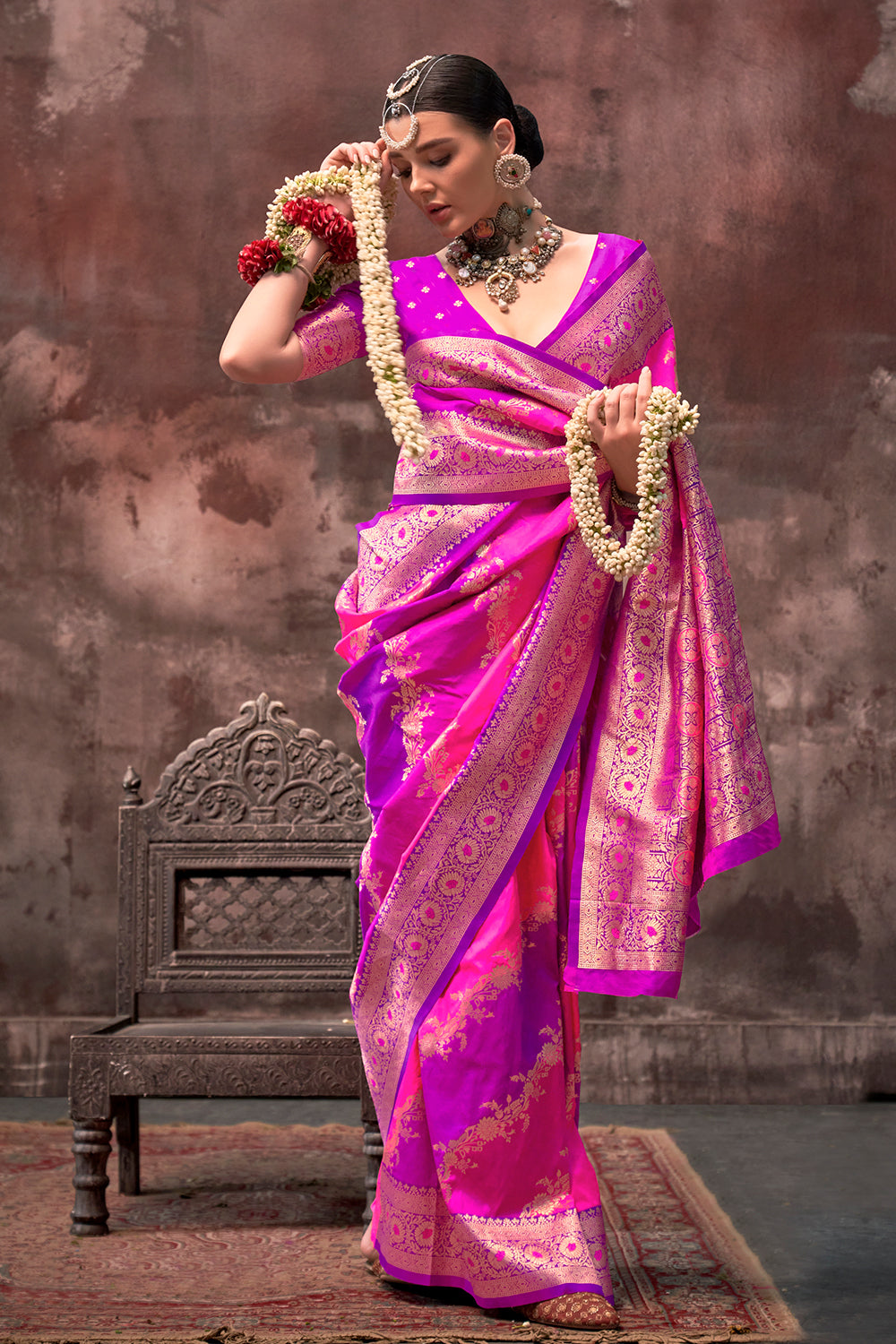
Cultural Significance:
Banarasi sarees are an integral part of Indian weddings, symbolizing prosperity and elegance. Brides often adorn themselves with these sarees, which are passed down as heirlooms. Beyond weddings, these sarees have become a symbol of India’s rich textile heritage, showcased on global platforms.
Challenges & Revival:
The art of Banarasi weaving has faced challenges from industrialization and competition with machine-made fabrics. However, efforts to revive the craft through government initiatives, designer collaborations, and awareness campaigns have breathed new life into the tradition. The GI (Geographical Indication) tag for Banarasi sarees has also helped protect the authenticity of these masterpieces.
Modern Relevance:
Today, Banarasi sarees are celebrated for their versatility. Designers incorporate traditional weaves into contemporary fashion, making them relevant for modern occasions while preserving their cultural essence.


